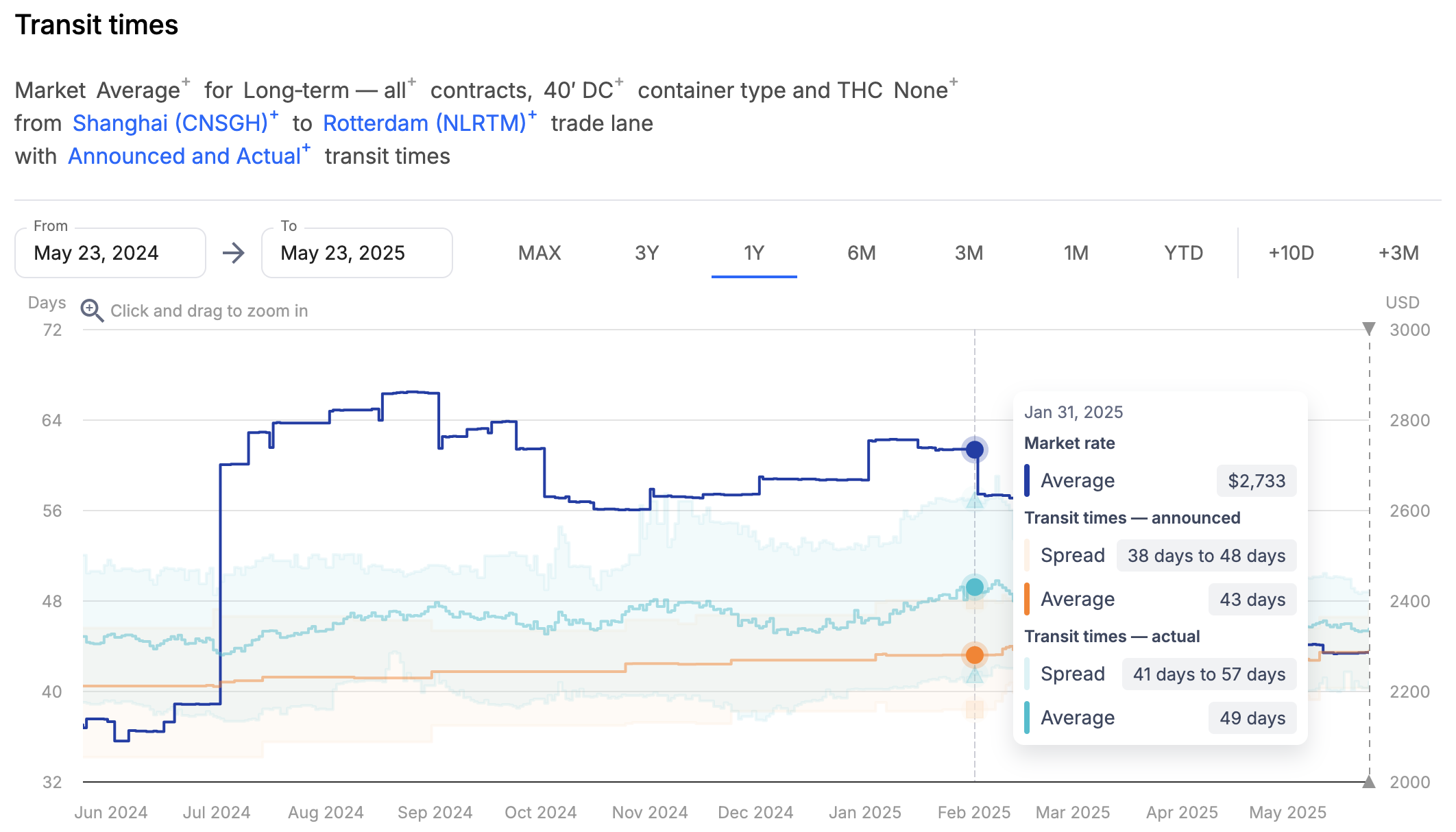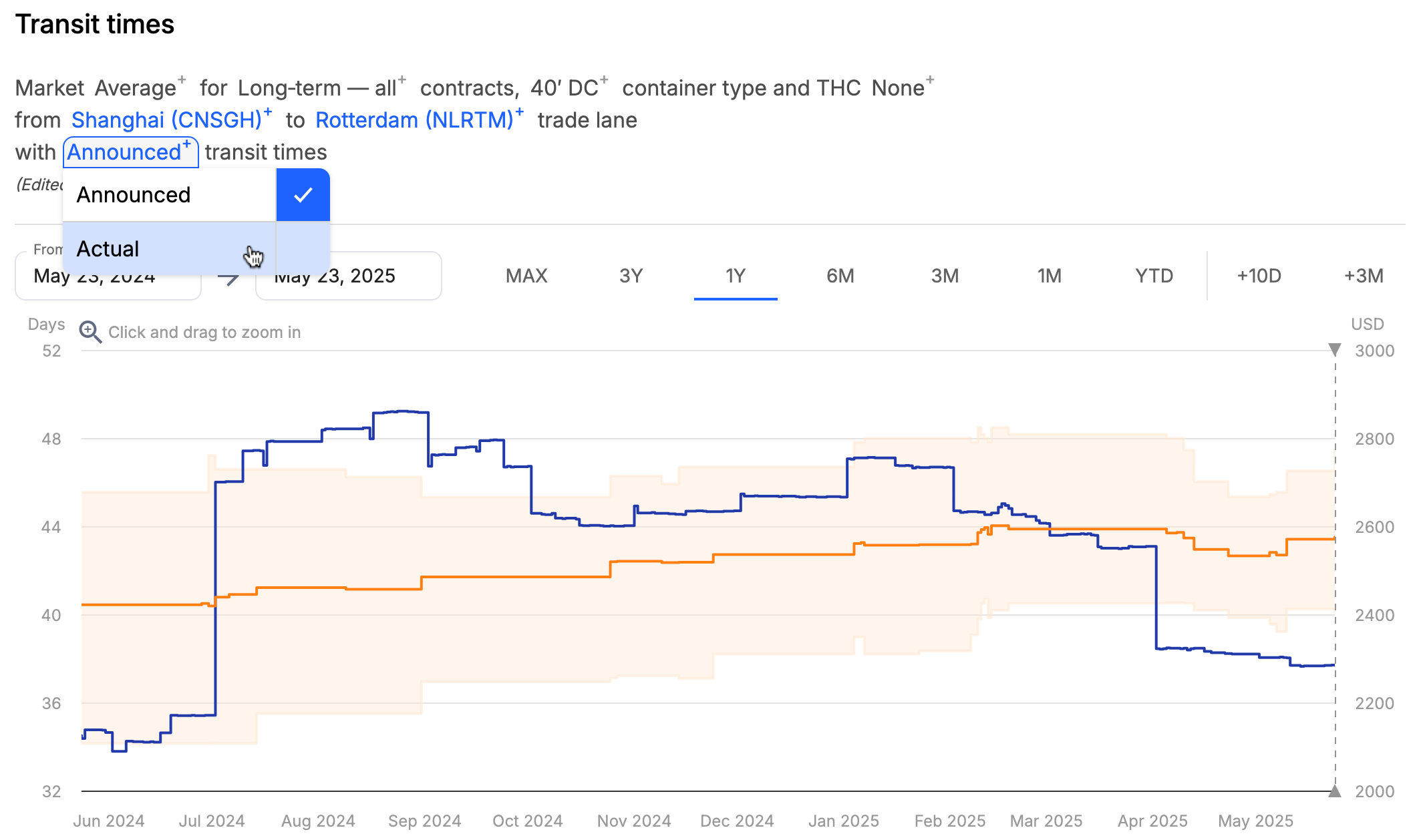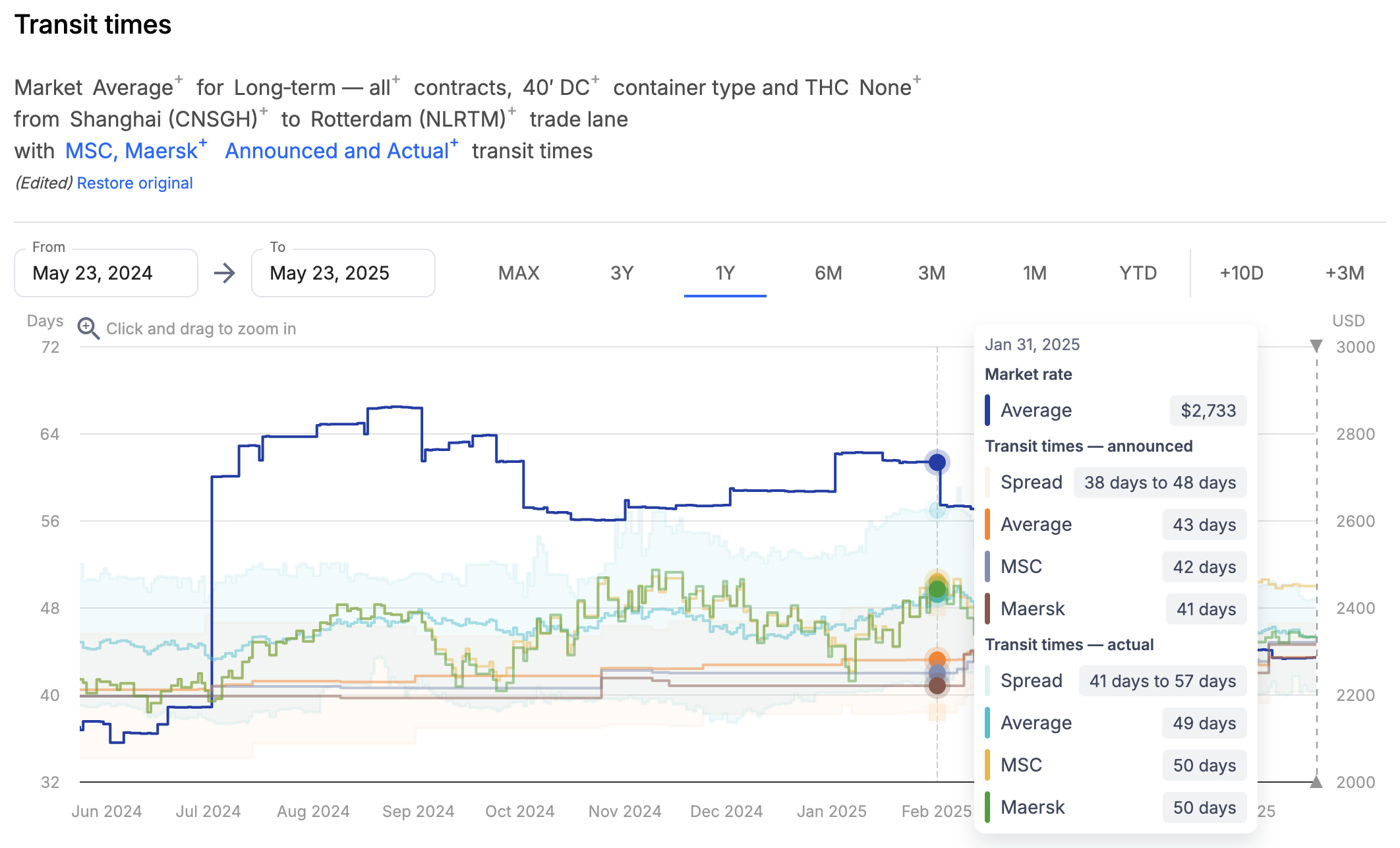Transit times
Transit times is a collection of market data available on Market benchmarks that shows you the average vessel transit time across specific corridors or trade lanes, as well as information on transit time for individual carriers.
This data offers another way to gauge carriers' performance, allowing you to compare their announced schedules to the actual amount of time it takes for their vessels to arrive to their destination.
We update transit time data in our platform daily with a 30-day rolling average.
View transit time data
To access the transit time data, go to the Market benchmarks page and select Transit times in the Change dataset menu — the chart with market rates for the selected origin and destination will be updated with the information on average transit time:

By default, the chart displays both announced and actual transit time data, but you can select one or the other using the chart description:

If you want to see individual carrier performance, click Add comparison to the right of the chart, and then go to Transit times > Carrier to select the carriers you want to see on the chart:

You can also view announced transit times across individual services by adding them using the Services option.
You can also view your rates and carrier rates alongside transit time data, which could give you additional insight into cost vs. time.
Transit time methodology
Xeneta captures both scheduled (or announced) and actual transit time on the individual sailing level across specific services from berth to berth — from when the ship leaves its berth at the origin port, to when it arrives at its berth at the destination port.
We then use this data to calculate the daily 30-day rolling average that we show you in our platform.
For example, if you see that the actual transit time on Shanghai – Rotterdam today is 45 days, that means that all sailings from Shanghai to Rotterdam in the last 30 days took on average 45 days to arrive.
Carrier-level actual transit times are available for all carriers who participate in the vessel sharing agreement (VSA) on a specific service. That means that if a vessel sails on a Premier alliance service, it will count towards the averages for HMM, ONE, and Yang Ming, even if the vessel was operated by just HMM.
Reliability data
Reliability information displayed in Transit times is sourced from from eeSea, a subsidiary of Xeneta, and is calculated with the same methodology used in Schedule reliability.
Transit time interpretation
It's important to note that transit time information on it's own can be helpful but does not provide a comprehensive picture of reliability. For the best results, offered and actual transit times should be used in conjunction with on-time percentage, delays, and cancellation rates.
For example:
Service A may have just 1.5 days between average proforma vs. actual transit times, while Service B on the same port pair shows a difference of 3 days between promised and actual transit. Taken at face value, a user may select Service B.
Now, let's say Service A actually has an average of -3.0 days delay out of the port of origin, and a cancellation rate of 25% - while Service B has an average -1.0 day delay out of the port of origin, and a cancellation rate of 0%. Taking a fairly weighted risk with this additional context may now encourage you to instead select Service B.
Keep you eyes open for new products in Q1 2026 - we're going to introduce a new tool for weighing reliability metrics side-by-side at a hyper granular service level.
Updated about 2 months ago